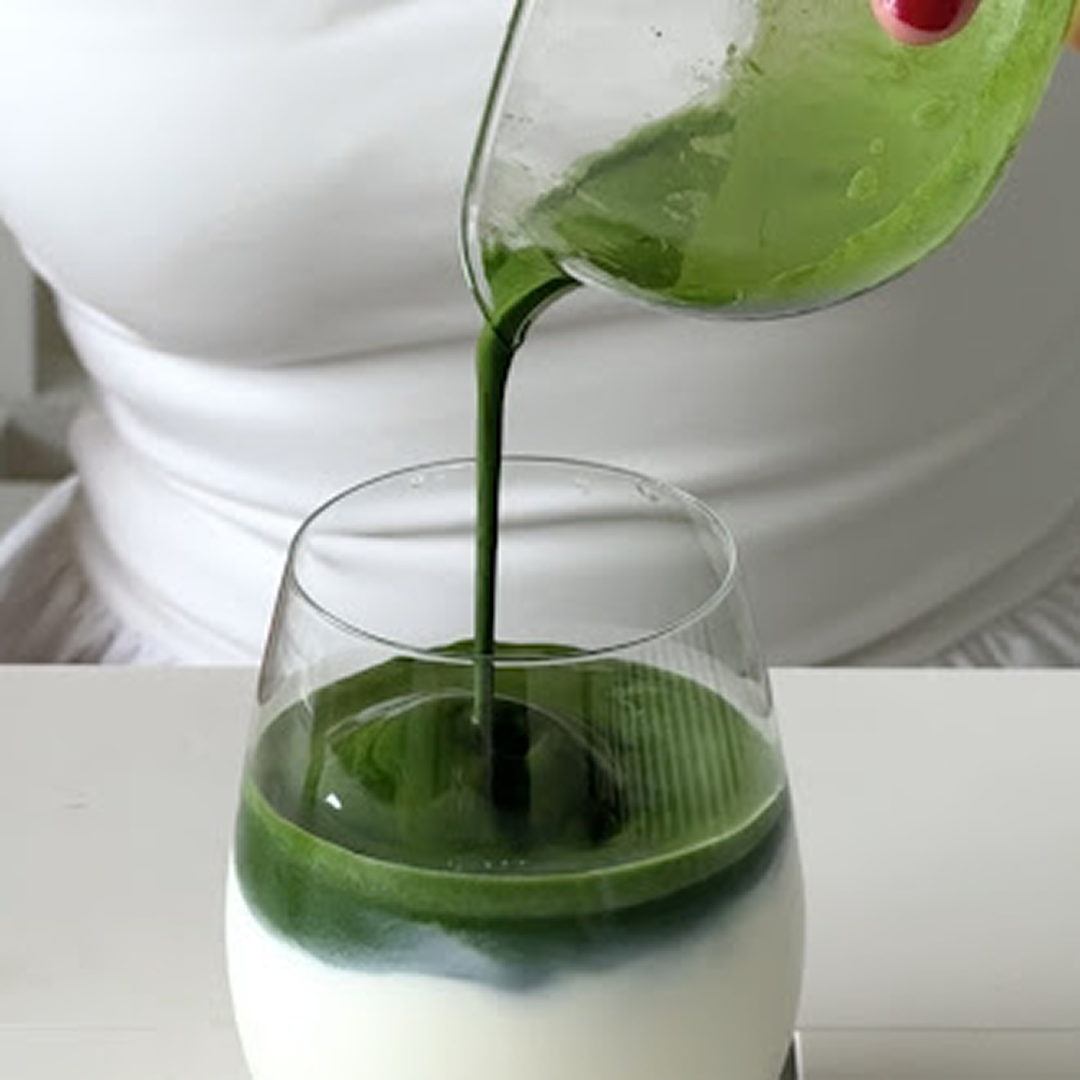
Matcha Prices in 2025: Why They’ve Skyrocketed & What It Means for You
Share
In 2025, matcha prices surged by over 180% due to low yields, high global demand, and intense competition at Kyoto’s tea auctions. Farmers, producers, and consumers are all feeling the effects, and prices are unlikely to fall anytime soon.
If you’ve been trying to buy your favourite matcha lately and found it out of stock or significantly more expensive than usual, you’re not imagining things. In the first half of 2025, matcha prices have reached record highs, and the entire industry – from small farmers in Uji to global consumers – is feeling the pressure.
What caused this dramatic shift? And what does it mean for matcha lovers going forward? In this article, we take a deep look at the causes, the consequences, and the future of matcha in this new landscape.
At Maison Koko, we’ve been fortunate to navigate these challenges with a foundation built on trust. Over the years, we’ve developed strong, personal relationships with boutique tea farms in Uji and Yame – regions known for producing some of Japan’s most exquisite ceremonial matcha.
These relationships aren’t transactional; they’re collaborative. Because of them, we’ve been able to keep our stock fresh, seasonal, and consistently aligned with our values, even in the face of market shortages.
Shop our extensive range of matcha here.
How Matcha Gets to Your Cup: A Quick Look at the Supply Chain

To understand the current price surge, it's essential to know how matcha reaches consumers. The process begins with tea farmers who cultivate and harvest the leaves, typically during Japan's prized first flush in spring. These leaves are then steamed and dried into tencha, the raw material for matcha.
The tencha is either sold at auction, directly to customers, or through pre-negotiated contracts with manufacturers. Once purchased, tencha is carefully stone-ground into matcha powder, blended by tea houses or manufacturers, packed, and then distributed to domestic and international markets (source).
While this system may appear linear, each step is complex. A bottleneck or disruption at any point, especially at the auction level, can send shockwaves throughout the industry. And that's exactly what has happened in 2025.
A Season of Contradictions: High Quality, Low Yield
This year’s harvest was both a blessing and a challenge. The spring season brought favourable weather conditions across much of Japan. A cool and gradual warming allowed tea leaves to develop slowly, which is ideal for building rich flavour and aromatic complexity (read more). Producers widely agree that 2025 has delivered one of the best quality harvests in recent years.
However, quality came at the cost of quantity. The same cool temperatures that preserved flavour also slowed growth, resulting in fewer leaves per plant. In Yame, one of Japan's most renowned tea-growing regions, a late frost damaged portions of the crop, compounding the problem. Overall, industry sources estimate that yield is down by approximately 11% compared to 2024.
What Happened at the Kyoto Auction
The Kyoto market, one of Japan's most important tea auctions, opened on May 10, 2025. By May 16, just four trading sessions had already recorded 55,392 kilograms of tencha sold – a lower volume than the 58,263 kilograms sold by the same date the year before. However, it wasn’t the volume that stunned the industry. It was the price.
The average transaction price hit ¥9,058 per kilogram, marking a 184.8% increase from 2024 and a 225.8% increase from 2023. These are historic numbers. They reflect not only the reduced availability of high-quality matcha but also a sense of panic among tea manufacturers.
Eager to secure raw material for the year ahead, many companies entered the auction with aggressive bids, creating what some described as a price war. The result: small producers and less capitalised manufacturers were priced out entirely, and even long-standing relationships could not shield buyers from the upward pressure.
Who Is Affected? Short Answer: Everyone
The effects of this price spike ripple across every layer of the matcha world. For tea farmers and producers, the sudden surge in demand has been bewildering. While higher prices might seem like good news, many farmers were caught off guard and don’t have the infrastructure to increase output.
Expanding matcha production isn’t as simple as planting more tea. New bushes take up to five years to reach maturity, and finding arable land and skilled labour is increasingly difficult in Japan’s ageing rural communities.
Manufacturers have also been hit hard. Some have had to suspend or discontinue blends they've offered for years because they couldn't secure the same ratio of cultivars or quality levels required to recreate them. Even when they could access enough tencha, the cost often exceeded the price point of the product category, making production financially unviable.
Retailers, too, are feeling the strain. Many popular matcha products are out of stock, and some retailers have implemented strict purchase limits to prevent hoarding and speculation. Others are looking beyond the traditional regions of Uji and Yame, exploring matcha from emerging areas like Kagoshima, Shizuoka, Mie, and Miyazaki.
While promising, these newer regions are still ramping up and may not yet offer the same volume or flavor profiles customers expect.
And then there’s the consumer. Prices are higher across the board, and in many cases, favourite blends are simply unavailable. It’s important to note that retail prices in Japan are nationally standardised. Whether you’re buying in Uji or online from abroad, the price is the same. There are no hidden discounts or local deals to chase.
At Maison Koko, our approach has always been one of intentional sourcing and long-term thinking. Instead of scrambling for availability, we plan harvest seasons ahead with our producers. That lets us better manage stock, maintain quality, and shield our customers from the sharpest price volatility. We’re committed to offering not just authentic matcha, but a sense of continuity in a market that’s rapidly changing.
Explore our 2025 First Harvest Collection to see what we’ve been curating.
Will Prices Come Back Down?
The short answer: it's unlikely. Unlike some markets that experience cyclical highs and lows, Japanese tea pricing tends to be conservative and slow to change. In fact, some major producers hadn’t raised their prices in decades before this year.
A confluence of factors – reduced yield, surging demand, and a competitive auction system – has forced the industry to recalibrate. Once prices are raised in Japan, they rarely return to previous levels.
Moreover, the structural limitations of tea farming mean that increasing the supply won’t be easy or fast. The matcha boom is not just a trend anymore. It's part of a broader global shift toward premium wellness products, and matcha now sits firmly in that category.
Not Just Matcha: A Domino Effect on All Japanese Teas
As more producers shift their focus to matcha to capitalize on its popularity, fewer resources are being devoted to other green tea types like gyokuro, kabusecha, and sencha.
Many tencha producers have started converting bushes that once produced these teas to matcha cultivation. That means the prices of these teas are rising as well, and supply is becoming tighter across the board. What was once a niche concern about matcha has now grown into a broader issue affecting the entire Japanese green tea ecosystem.
What Can You Do as a Consumer?

First, buy from sources you trust. There will always be opportunists who try to take advantage of confused consumers with subpar or mislabeled matcha. Second, consider expanding your palate. Excellent matcha is now being produced in a wider variety of regions, and these lesser-known areas can offer high quality at a more stable price. Third, don’t panic.
Yes, your favourite blend might be unavailable this season, but that doesn’t mean matcha is disappearing. The industry is evolving. Finally, educate yourself. The more you understand the supply chain and the work that goes into producing high-quality matcha, the more informed your decisions will be.
If you're curious, you can start with our guide on how to store matcha properly, or explore the differences between matcha harvests and our ultimate guide to understanding matcha grades.
Final Thoughts
The 2025 matcha shortage and price surge are part of a larger story. What began as a quiet tradition rooted in Japanese ceremony has now become a global phenomenon. With popularity comes complexity. This year’s harvest is a reminder that matcha is not just a product – it’s a craft, a culture, and a livelihood for thousands of people.
At Maison Koko, we see this moment as both a challenge and an opportunity. We’re continuing to invest in thoughtful partnerships and seasonal matcha that meets our exacting standards. Our goal isn’t to be the biggest matcha brand – it’s to be the most trusted. As the landscape shifts, we’ll stay grounded in what matters: freshness, transparency, and respect for the people and land behind every matcha.




